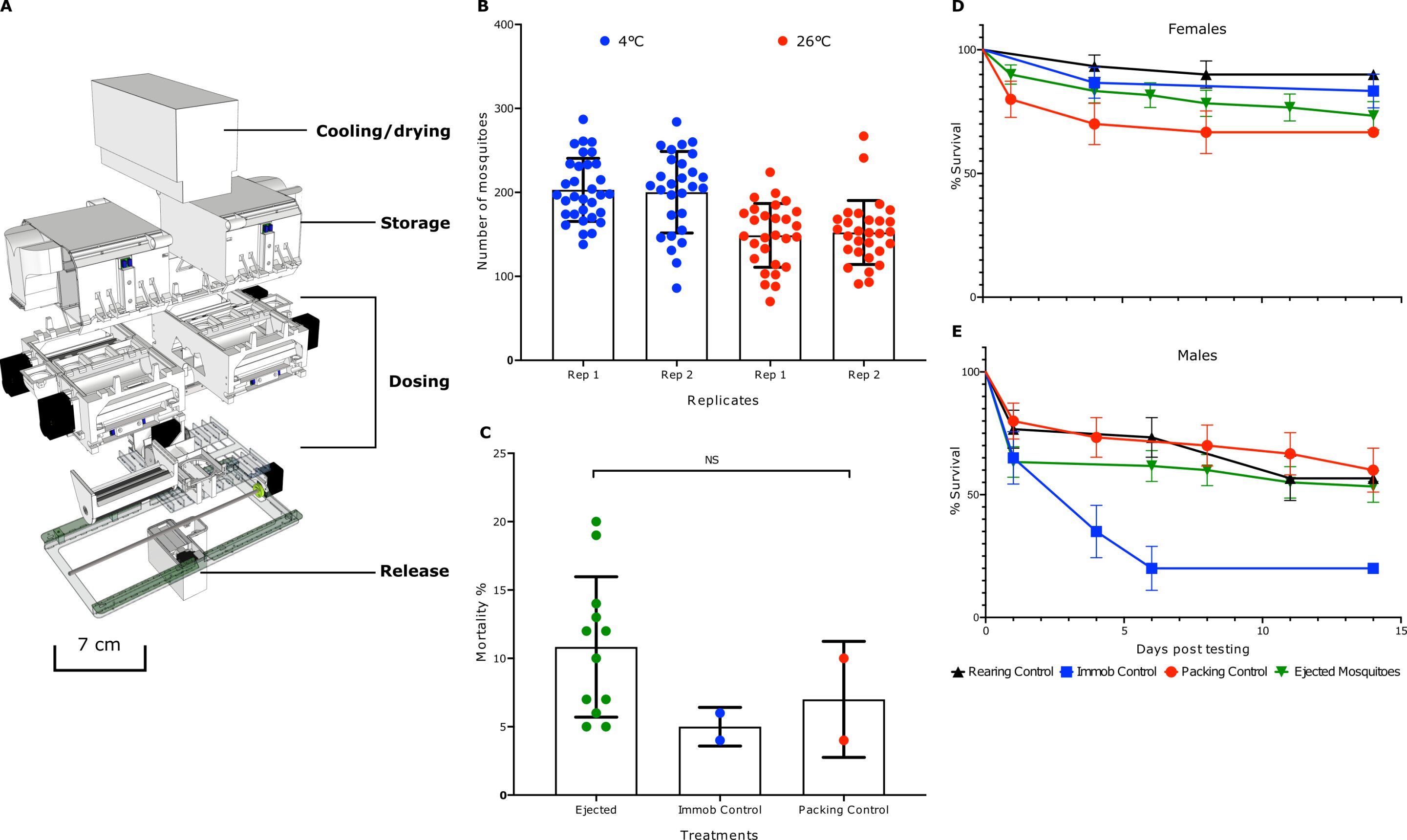An international team of infectious disease researchers with the World Mosquito Program, working with colleagues from WeRobotics, has developed a way to release large numbers of mosquitoes infected with a mosquito-killing bacteria into the wild much more efficiently than current methods.
In their paper published in the journal Science Robotics, the group describes the container that was designed to hold and carry the mosquitoes and then to release them slowly over a wide parcel of land.
Jacob Crawford, with Verily Life Sciences LLC, has published a Focus piece in the same journal issue outlining the requirements necessary for effective aerial release devices and pointing out the benefits that automation could provide.
Mosquitoes carry a variety of viruses such as those that cause dengue fever. Scientists and health officials have been working to find ways to reduce their population numbers in places that are vulnerable to such infections. One such approach has been finding bacteria that infect and disable or kill the types of mosquitoes that cause disease and then finding ways to infect the mosquitoes with the bacteria.
The most common approach is to breed large numbers of the mosquitoes, infect them and then manually release them into the wild. But such an approach, it has been found, is inefficient, difficult, and oftentimes dangerous. In this new effort, the research team has found a way to use drones to get the job done.
The work by the team involved designing a container that could hold multiple small loads of infected mosquitoes and then release them at desired intervals. It also had to be small and lightweight enough to be carried by a drone.
The result was a small white box capable of holding 160,000 mosquitoes, divided into multiple compartments with a release mechanism that could be used to release the mosquitoes held in a given compartment on-demand.
The drone can fly to a given spot, release approximately 150 infected mosquitoes and then move to another spot—over and over until all the mosquitoes have been released. The box also has a climate control feature and a means for sedating the mosquitoes until it is time for their release.
In field trials conducted in Fiji, the team found that the system worked well in uniform distribution compared to manual release. In a second field test, they found that use of the drone to distribute infected mosquitoes effectively spread the disease and greatly reduced mosquito numbers in the given area.
More information:
Ya-Hsun Lin et al, Field deployment of Wolbachia -infected Aedes aegypti using uncrewed aerial vehicle, Science Robotics (2024). DOI: 10.1126/scirobotics.adk7913
Jacob E. Crawford, Virus-blocking mosquitoes take flight in the fight against dengue, Science Robotics (2024). DOI: 10.1126/scirobotics.adr0224
© 2024 Science X Network
Citation:
Using a drone to release mosquitoes infected with deadly bacteria into the wild (2024, August 2)
retrieved 2 August 2024
from https://techxplore.com/news/2024-08-drone-mosquitoes-infected-deadly-bacteria.html
This document is subject to copyright. Apart from any fair dealing for the purpose of private study or research, no
part may be reproduced without the written permission. The content is provided for information purposes only.





